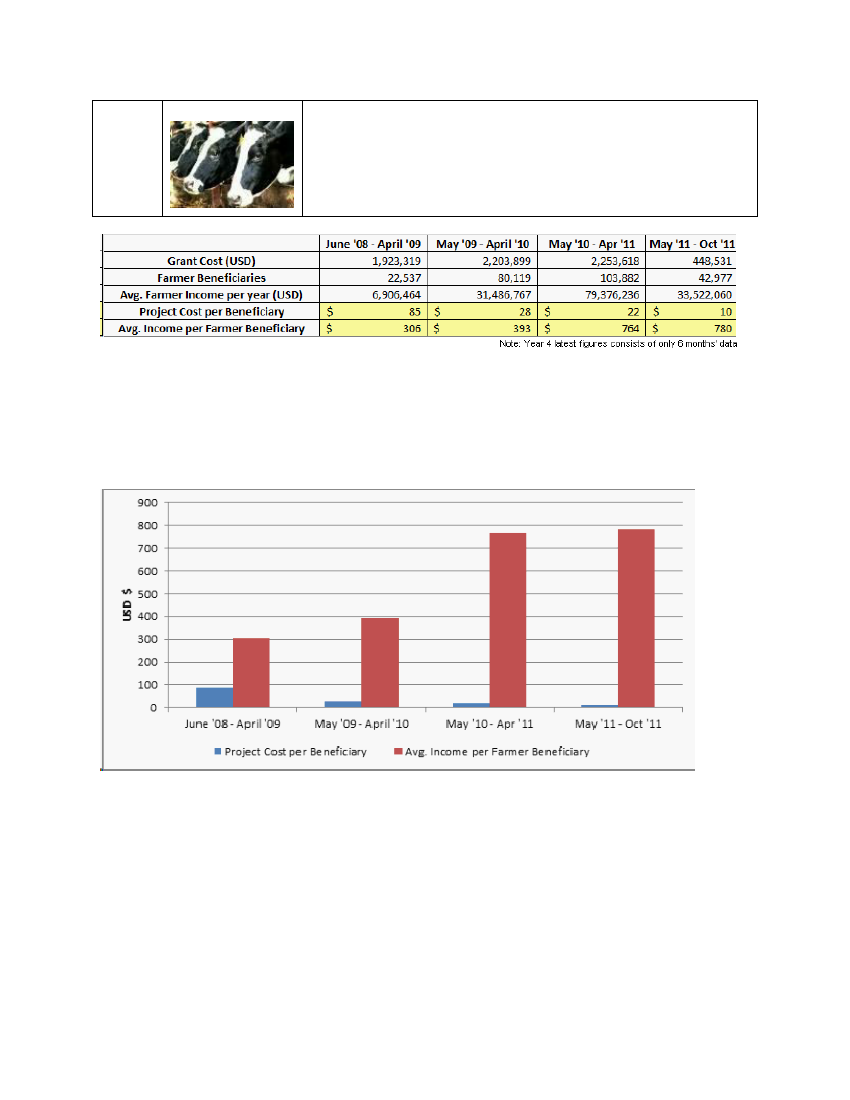
Costs
The cost effectiveness of the program been calculated by the value of farmer
income. Project spend ramped during years 1, 2 and 3 then decreased significantly
in year 4. As the markets takes over service delivery the project costs per
beneficiary diminish and benefits begin to increase at a significant rate during
years 2 and 3.
It should be recognized that such a project does not require less financial
resources than conventional interventions – the difference is that the approach is
more effective. Directly delivering services can rapidly achieve comparable levels
of exposure but services cease when financial support stops.
For purposes of replication, this type of project is human resource intensive and time intensive.
Given that KDSCP did not support directly either service delivery costs or any equipment
purchases, its core expenditure provided the human resource skills to drive its activities. As a
result, a very high percentage of all project costs related specifically to either personnel fees or
costs incurred from the implementation of their activities. The logistics costs of training were
minimized on the basis that consumers were largely responsible for meeting these costs.
There has been a decrease in program cost per beneficiary farmer during the first four years since
program implementation. Program costs (grant funds) per beneficiary farmer decreased by 88%
from USD 85 per farmer in 2009 to USD 10 in 2011. During the same period, the average income
per dairy farmer in the program increased by approximately 155% from USD 306 per year per
farmer in 2009 to USD 780 in 2011. This illustrates that the program has had significant impact on
farmer beneficiaries while not necessarily increasing spending to meet its objectives.
36